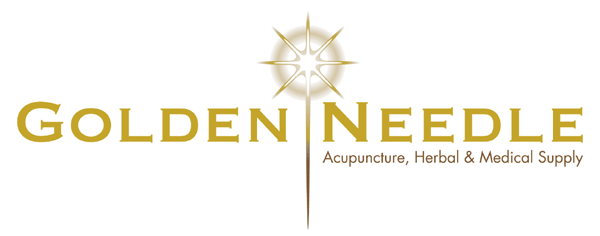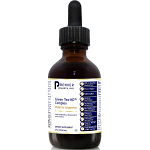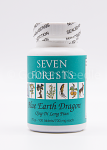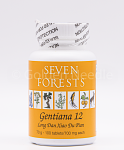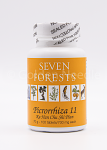Luobuma-MG
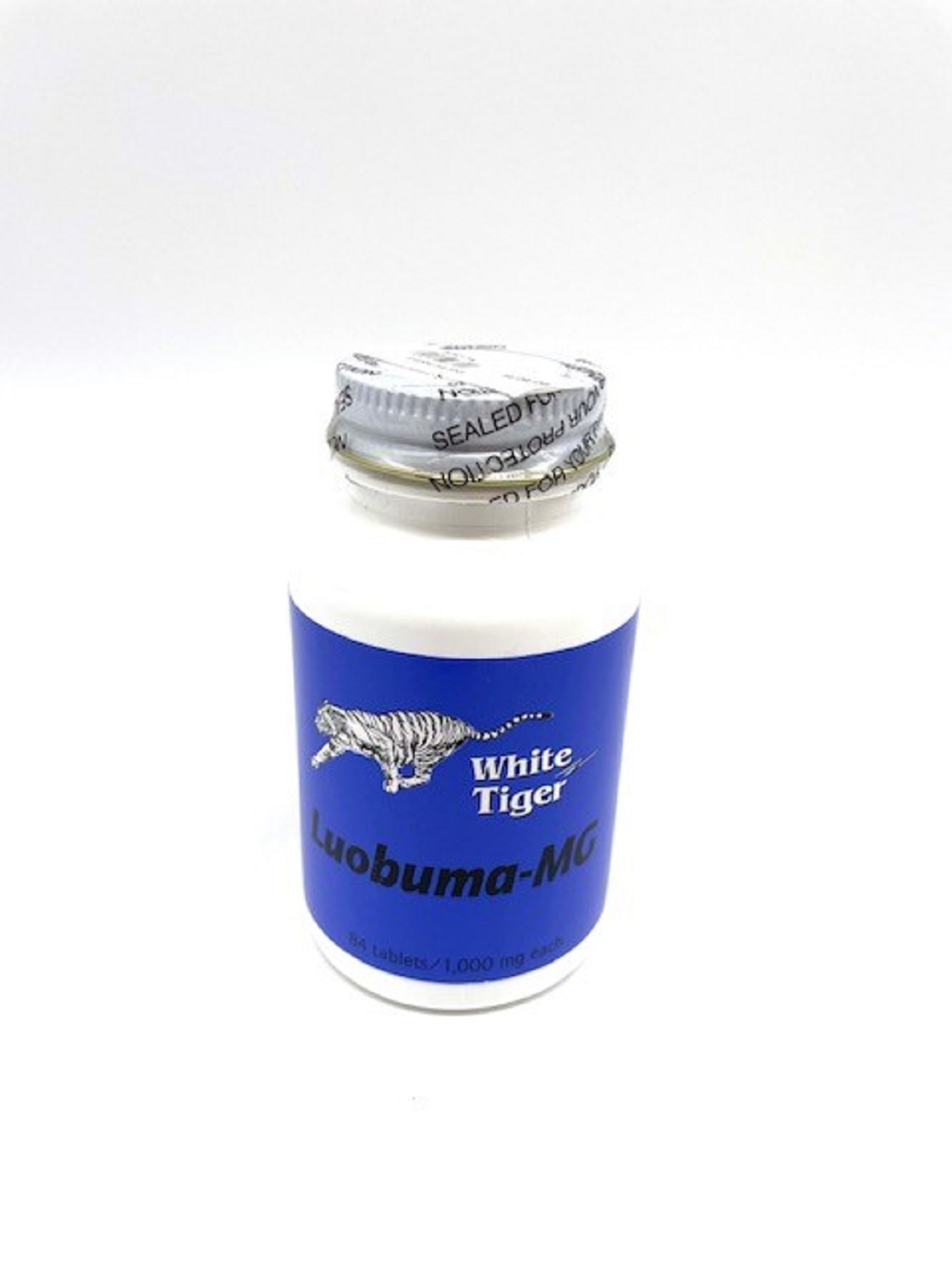
Luobuma-MG
| SKU | WT217A | |
| Brand | White Tiger | |
| Unit Size | 84 Tablets | |
| Recommendations | White Tiger products are not eligible for any type of discount. |
|
| Description | The names of our White Tiger formulas are sometimes rather peculiar; I think of Altarulm, Ruvibia, Serageum, and now Luobuma-MG. The names are most often constructed from bits and pieces of the ingredient designations so as to generate a fanciful name. Sometimes it works out quite well, as in Cartaequin, Nardova, and Quercenol. In the current case, Luobuma is the Chinese name for one of the key herbs of the formula, though luobumaye (ye = leaves) is the complete name Luobuma means net-cloth hmp; the western variety of this plant is often referred to as Indian hmp, because its stems yield a strong fiber, which was used by Native Americans to make fishing and carrying nets, so it has the same physical characteristics and practical use both east and west. Hard to pronounce, lew-oh boo ma, so low boo ma is okay. The MG ending is from the scientific nomenclature for magnesium (Mg), which is an ingredient of the formula. White Tiger formulas combine eastern and western approaches, and in this case the conditions to be treated, such as hypertension and glaucoma, are ones that were discovered by modern (western) medicine. While the herb ingredients are from China, they are combined with the nutritional approach, using a highly absorbable form of magnesium (the glycinate), so that the magnesium component acts as an anti-spasmodic agent. Otherwise, magnesium tends to stay in the intestines and attract water, hence in its more common forms is used for treating constipation (such as with Epsom salt). The amount of magnesium here won’t have that effect. About twenty years ago, ITM was asked to design and provide a formulation for hypertension to be used in a clinical evaluation of Chinese herbs for that application. After completing a thorough literature search and designing and producing the formula, it turned out that the study could not be conducted. This formula has been in use since then, called Uncaria 6 (Seven Forests). The key herb, uncaria (gouteng) has an alkaloid, rhyncophylline, that has hypotensive actions. It is supported by two herbs used extensively in Chinese patent formulas for hypertension, the fire purging herbs prunella (xiakucao) and scute (huangqin). The three herbs are considered to cool the liver fire and calm the associated liver wind that contributes to spasm of the vessels, affecting blood pressure. The other three ingredients of the formula serve as tonics to the liver, replenishing the deficiency that underlies the excess conditions of fire/wind. Other hypertension formulas were also developed in ITM’s work, including two that are based on modern TCM formulations (20th Century): Tian Ma Gou Teng Pian (Pine Mountain) and Seven Forests Haliotis 10 (based on Er Xian Tang). Why provide yet another hypertension formulation now? It is primarily to introduce the combination of luobuma (Apocynum venetum and related species) and magnesium, and also to give more attention to the use of epimedium (yinyanghuo) as an anti-hypertensive. One of ITM’s main purposes is to help educate practitioners and alert them to trends in TCM practice, and not just provide certain “remedies” for patients, though the use of the formulas allows practitioners to make observations on the diagnosis, selection, and effects of prescribing. Luobuma has been an herb of interest for me for many years. Its antihypertensive properties were studied in China since the 1970s, where it had mainly been used as a beverage tea and folk medicine. I had hesitated to use it because of a safety issue I was concerned about. The herb was obviously being used safely in China, but its active ingredients included components designated as “cardiac glycosides.” This is a broad category, and some of them are extremely potent (best known example is digitalis glycosides). The western species of Apocynum had been reported toxic to livestock, something that can occur with several medicinal plants we use because of the large amount that grazing animals can consume, but later analysis showed this claimed animal response to be false. More recent studies of the Chinese herb, rather than indicting toxicity have demonstrated a broad range of positive effects, including protection of the liver, protection of lipoproteins from oxidation, and protection against neurotoxicity of steroids or neural damage due to seizures. About ten years ago, I discovered a tea made from a mixture of tea leaves and luobuma leaves being imported and sold in the U.S. I was able to arrange to have this kind of tea made in Tibet, using half Tibetan green tea leaves and half luobuma leaves. The tea proved helpful for people with hypertension. Unfortunately, the factory that made this, and other teas that we had used, closed down, and so we haven’t had fresh supplies coming in (some of the old tea, which is still good because it was packaged properly, remains). Cardiac glycosides can improve heart output and stabilize heart rate; magnesium also provides for stability of the heart activity and has antispasmodic action that helps with hypertension. Magnesium is often suggested to be administered along with the more potent cardiac drugs to help avoid some of their adverse effects. The drugs for the heart may promote excretion of magnesium (as well as calcium and other minerals), so replenishment through supplementation is often suggested. In this case, with mild glycosides found in luobuma, the main role of magnesium is to enhance the effects rather than counter adverse effects, which should not occur anyway. For those used to seeing TCM formulations, this one will look peculiar. Using modern TCM categories, there are two yang tonics (epimedium and morinda) and two herbs for alleviating wind (chrysanthemum, best known for dispelling invading wind, and tribulus, best known for calming internal wind), and then cassia seed, which is typically put into the category of moistening laxatives. However, this new formula has a structure somewhat similar to that of Er Xian Tang. Er Xian Tang includes epimedium and morinda, which is a pair of herbs I had selected as useful for the Luobuma-MG independently of that similarity (that is to say, I had decided on those two herbs for reasons other than the fact that they were used in this formula, which is also applied to hypertension); they are increasingly recognized as useful for regulating blood pressure. By its design, Er Xian Tang clears deficiency heat of the kidney with anemarrhena and phellodendron; it was aimed at menopausal hypertension. Luobuma-MG is aimed at hypertension associated with liver fire and wind. The combination of tribulus, chrysanthemum, and cassia seed will be recognized as characteristic of formulas for treating eye disorders associated with wind-heat. According to TCM doctrines, the eyes are associated with the liver and they are subjected especially to wind and stagnation. By including the anti-hypertensive herbs found in formulas for eye problems this formula may also benefit those who suffer from hypertension of the eyes, that is, glaucoma. The formula can be combined with others, for example: COMBINE WITH Uncaria 6 or Clerodendron 6 for hypertension Pueraria 10 for muscle tension Lotus Leaf Tablets and Guggul Rose for hyperlipidemia with hypertension Salvia Shou Wu and Pueralex for reducing risk factors for cardiovascular disorders Chrysanthemum 9 for glaucoma |
|
| Ingredients | Luobuma tablets provide (in two tablets): Herb extracts: yinyanghuo Epimedium............. 300 mg baijili Tribulus................... 300 mg yejuhua Chrysanthemum...... 300 mg juemingzi Cassia seed.............. 300 mg luobumaye Apocynum.............. 200 mg bajitian Morinda.................. 200 mg Mineral: Magnesium glycinate.................... 400 mg (provides 72 mg elemental magnesium) |
|
